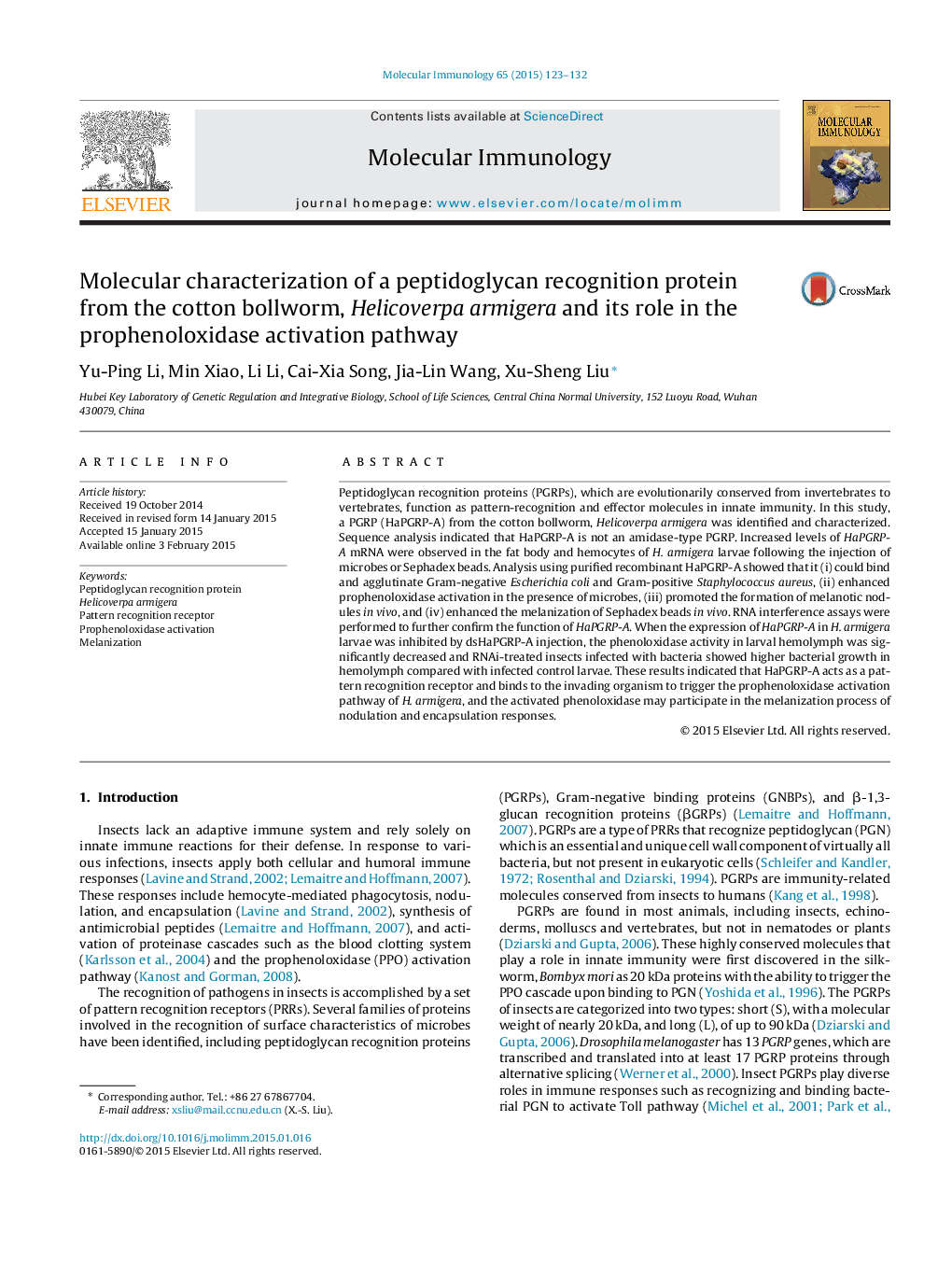| کد مقاله | کد نشریه | سال انتشار | مقاله انگلیسی | نسخه تمام متن |
|---|---|---|---|---|
| 2830634 | 1163747 | 2015 | 10 صفحه PDF | دانلود رایگان |

• HaPGRP-A can bind and agglutinate bacteria.
• HaPGRP-A is involved in the PPO activation pathway.
• HaPGRP-A is involved in the melanization process of nodulation and encapsulation.
• Knockdown of HaPGRP-A decreased PO activity in bacteria-challenged larval hemolymph.
• RNAi-treated larvae showed increased bacterial growth in the hemolymph.
Peptidoglycan recognition proteins (PGRPs), which are evolutionarily conserved from invertebrates to vertebrates, function as pattern-recognition and effector molecules in innate immunity. In this study, a PGRP (HaPGRP-A) from the cotton bollworm, Helicoverpa armigera was identified and characterized. Sequence analysis indicated that HaPGRP-A is not an amidase-type PGRP. Increased levels of HaPGRP-A mRNA were observed in the fat body and hemocytes of H. armigera larvae following the injection of microbes or Sephadex beads. Analysis using purified recombinant HaPGRP-A showed that it (i) could bind and agglutinate Gram-negative Escherichia coli and Gram-positive Staphylococcus aureus, (ii) enhanced prophenoloxidase activation in the presence of microbes, (iii) promoted the formation of melanotic nodules in vivo, and (iv) enhanced the melanization of Sephadex beads in vivo. RNA interference assays were performed to further confirm the function of HaPGRP-A. When the expression of HaPGRP-A in H. armigera larvae was inhibited by dsHaPGRP-A injection, the phenoloxidase activity in larval hemolymph was significantly decreased and RNAi-treated insects infected with bacteria showed higher bacterial growth in hemolymph compared with infected control larvae. These results indicated that HaPGRP-A acts as a pattern recognition receptor and binds to the invading organism to trigger the prophenoloxidase activation pathway of H. armigera, and the activated phenoloxidase may participate in the melanization process of nodulation and encapsulation responses.
Journal: Molecular Immunology - Volume 65, Issue 1, May 2015, Pages 123–132